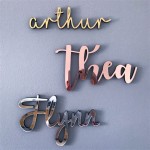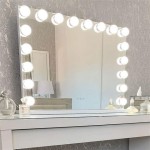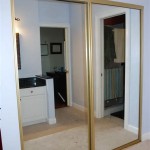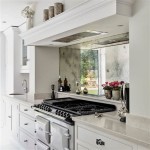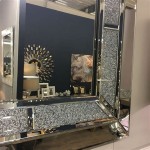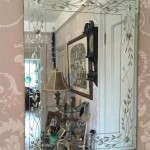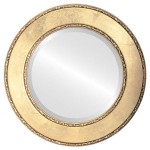White Baroque Mirrors: A Reflection of Elegance and History
White baroque mirrors represent a timeless fusion of artistry and functionality. Their ornate frames, finished in pristine white, evoke a sense of classic elegance while adding a touch of grandeur to any space. Understanding the history, characteristics, and versatile applications of these decorative pieces allows for informed selection and integration into diverse interior design schemes.
The Baroque period, spanning roughly from the 17th to the mid-18th century, witnessed an explosion of artistic expression characterized by drama, opulence, and intricate detail. This aesthetic sensibility extended to decorative arts, including mirror design. Baroque mirrors, often large and elaborately carved, served as both functional objects and symbols of wealth and status. The use of white in these frames, often achieved through gesso and gilding techniques, further enhanced their luxurious appeal.
A defining feature of white baroque mirrors is their intricate ornamentation. Common motifs include acanthus leaves, scrolls, shells, flowers, and cherubs. These decorative elements, often asymmetrical and dynamic, create a sense of movement and visual interest. The white finish allows the intricate carvings to stand out, highlighting the craftsmanship and artistic skill involved in their creation.
The size and shape of white baroque mirrors vary considerably, offering options for diverse spaces and design preferences. Large, overmantel mirrors can serve as a focal point in a living room or dining area, while smaller, more delicately framed mirrors can add a touch of elegance to a hallway or bedroom. Oval, rectangular, and round shapes are common, with some antique or reproduction pieces featuring more unusual silhouettes.
The construction of white baroque frames traditionally involved wood carving and gilding. Skilled artisans would carve intricate designs into the wood, which would then be coated with gesso, a mixture of plaster and glue. This provided a smooth, white surface suitable for gilding or painting. While genuine gold leaf was used in high-end pieces, more affordable alternatives like silver leaf or paint were also common.
Modern white baroque mirrors often utilize different materials and techniques while retaining the aesthetic essence of their historical counterparts. Resin, polyurethane, and composite materials are frequently employed for their durability and ease of molding. These materials allow for the creation of intricate designs at a more accessible price point. Finishes range from bright, glossy white to more subdued, matte or antique white, offering a variety of stylistic options.
Integrating a white baroque mirror into an interior space requires careful consideration of scale, placement, and surrounding décor. In traditional settings, these mirrors complement antique furniture, rich fabrics, and ornate chandeliers. However, the versatility of white allows for seamless integration into more contemporary or eclectic interiors as well. A large white baroque mirror can add a touch of glamour to a minimalist living room, while a smaller piece can create a focal point in a modern bathroom.
The reflectivity of a white baroque mirror can also be utilized to enhance the sense of light and space within a room. Placing a mirror opposite a window can reflect natural light deeper into the space, making it appear brighter and larger. Similarly, strategically placed mirrors can create the illusion of depth and expand the visual boundaries of a smaller room.
When selecting a white baroque mirror, it is essential to consider the quality of the frame and the finish. Examining the intricacy of the carvings, the smoothness of the surface, and the durability of the finish can provide insights into the overall quality of the piece. Antique or vintage mirrors may exhibit signs of wear and aging, which can add to their character and charm. However, it is crucial to assess the structural integrity of the frame and the condition of the mirror itself.
Caring for a white baroque mirror involves regular dusting and gentle cleaning. Avoid using harsh chemicals or abrasive cleaners, as these can damage the delicate finish. A soft, damp cloth is typically sufficient for removing dust and smudges. For more stubborn dirt, a mild soap solution can be used, followed by thorough drying to prevent water damage.
White baroque mirrors represent a timeless investment in both style and functionality. Their intricate designs and elegant white finish add a touch of sophistication to any interior. By understanding their historical context, construction techniques, and versatile applications, individuals can select the perfect white baroque mirror to enhance their space and reflect their personal aesthetic.

French Mirror White Lacquer 1 Left In Stock Interior Design

White Baroque Mirror Venice In 2 Sizes English Decorations Mirrors

Horchow Baroque Style Mirror Google Images Wall Mirrored Furniture

Stratton Home Decor White Baroque Mirror Com

Decorative Wall Mirror Vintage Hanging Mirrors For Bedroom Finland

White Baroque Mirror Florence In 5 Sizes English Decorations And Furniture

Elegant Baroque Mirror White Golden Decorations Bruno Costenaro

Kate And Laurel Jenelle Traditional Framed Baroque Mirror 20 X 30 White Distressed Antique Inspired Wall With Ornate Garland Crown Com

White Baroque Mirror Large Shabby Chic Vintage 359 00 Via Sofa Living Room Homes

Vidaxl Wall Mirror Baroque Style 23 6 X15 7 White Ralphs

